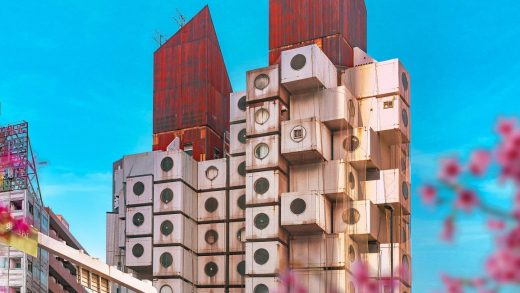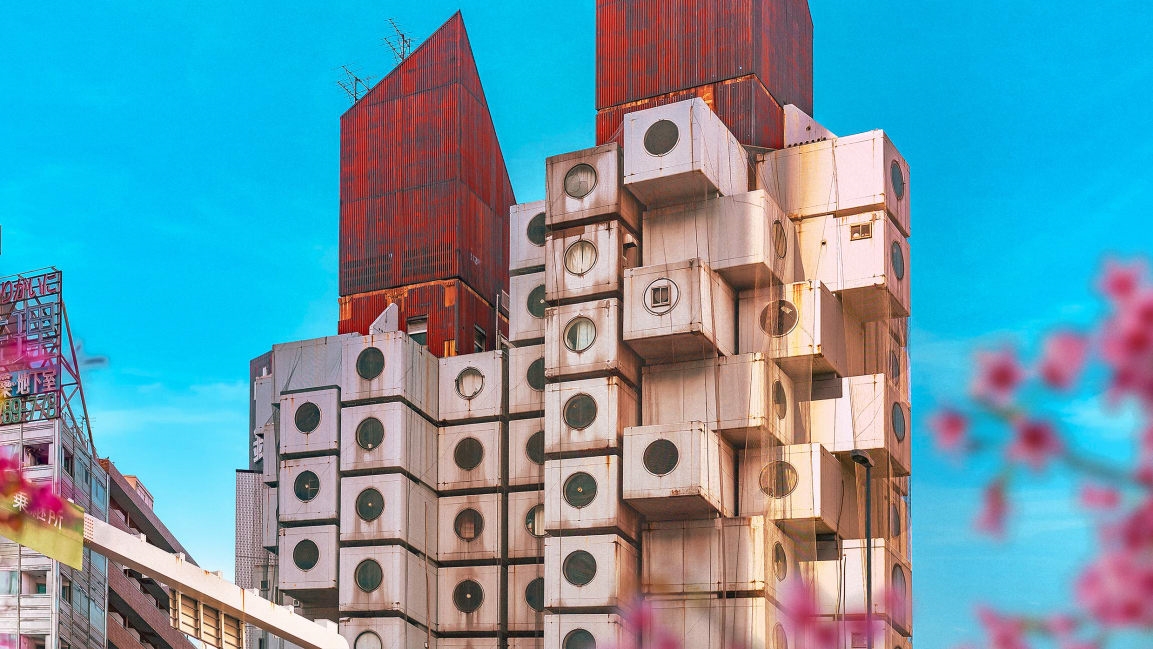The Nakagin Capsule Tower, one of the world’s weirdest and most wonderful buildings, will be demolished
The Nakagin Capsule Tower, one of the most famous buildings in Japan and a beloved piece of modernist architecture, will soon be demolished.
A block-stack of a building in central Tokyo, the Nakagin Capsule Tower, a mixed-use residential and office building, is unlike any other building, perhaps anywhere. Its 140 individually inhabitable, 100-square-foot capsule apartments and office spaces with single porthole windows are like spaceship interiors landed amid the bland and rectangular office buildings of the city. Designed by architect Kisho Kurokawa and completed in 1972, the building was a rarely built example of the Metabolist style of architecture, which framed buildings as living structures that could physically change and evolve over time. That futuristic vision made the tower a sci-fi darling, and led to its inclusion in such films as Wolverine and the live action version of the anime Ghost in the Shell.
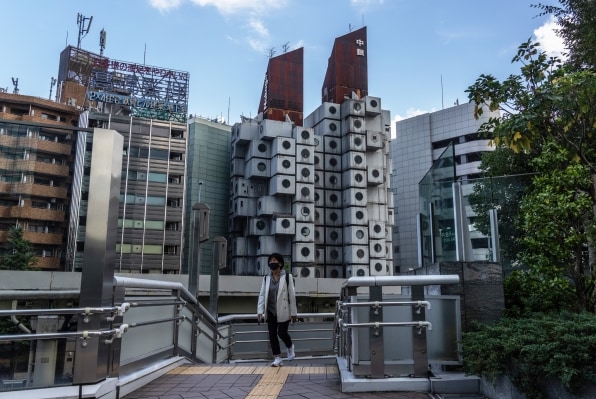
Despite calls from around the world for its preservation, the building is facing the wrecking ball. Agence France Presse reports that demolition will begin April 12.
William O. Gardner, a professor at Swarthmore College, is author of the 2020 book The Metabolist Imagination: Visions of the City in Postwar Japanese Architecture and Science Fiction (featuring the Nakagin Capsule Tower on its cover). Gardner says Kurokawa was interested in the idea of humans becoming nomadic, and buildings responding to their desire to move and change. The building was a real-life form of speculative fiction, imagining what a future city could look like by actually building it. “The concept of the capsule was influenced by the space age and spacecraft design,” Gardner says. “Kurokawa talked about the capsule as a type of mobile architecture docking together and moving into new configurations.”
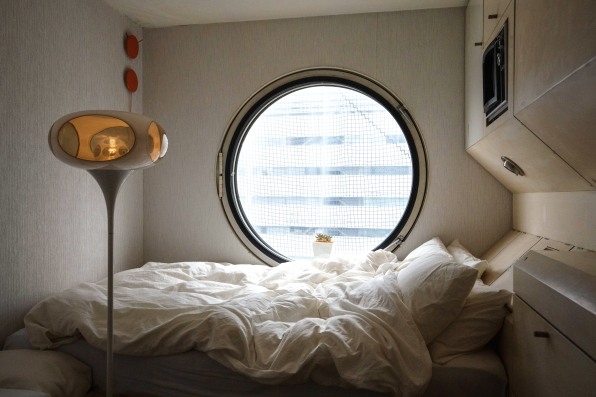
But the vision for the building was never quite realized. The capsules, instead of being updated or moved, have sat in place; and over the decades, the building’s unconventional design made repairs too complicated for some owners. As this paper from the preservation advocacy group DOCOMOMO explains, the capsules weren’t actually easy to change; removing one from the building would actually require the capsule above it to be removed at the same time. Leaks and damage to the building’s pipes have been long-simmering problems, and deferred maintenance has left many of the capsules crumbling and uninhabitable. In recent years, netting could be seen draped over many of the capsules to prevent pieces of the building from falling to the street below.
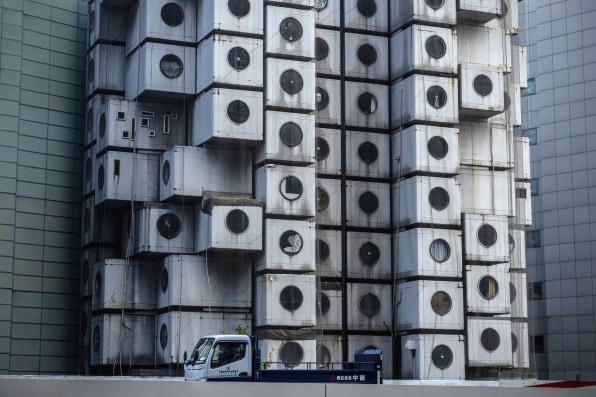
Efforts to preserve the building struggled to gather steam. The Nakagin Capsule Tower Preservation and Regeneration Project is among the most vocal, with an active Facebook page that tracks news and mentions of the building. Its members have advocated for various efforts to preserve individual capsules and upgrade those that have fallen into disrepair. Another less conventional effort sought to use cleverly designed capsule-shaped business cards to help explain the building’s preservation-worthy architecture.
Architect and preservation expert Theodore Prudon says there are a variety of reasons the building wasn’t able to be preserved. “One, of course, is money. It’s always about money,” he says. “Kurokawa himself talked about clipping new units into the structure. Clearly that is a very expensive proposition.” He notes that talk about demolishing the building first started in the early 2000s. “In many ways, it’s remarkable that the building has been able to survive as long as it has.”
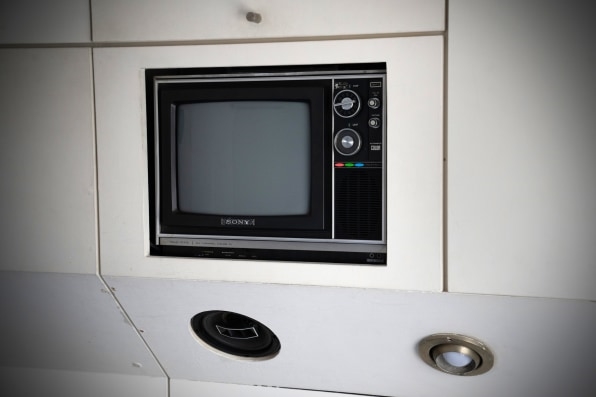
Some of the building’s own owners have been behind that call for demolition, citing maintenance costs that have become untenable. Now, 50 years after the building’s revolutionary construction, their wish is being granted.
But this won’t necessarily be the end for the building’s parts. Resident Tatsuyuki Maeda told AFP that some of its individual capsules will be preserved, possibly ending up on display in museums. It may not be the evolution the late architect Kisho Kurokawa had in mind when he designed this unique building, but it’s at least a next stage of life for a building meant to change with the times.
(61)

